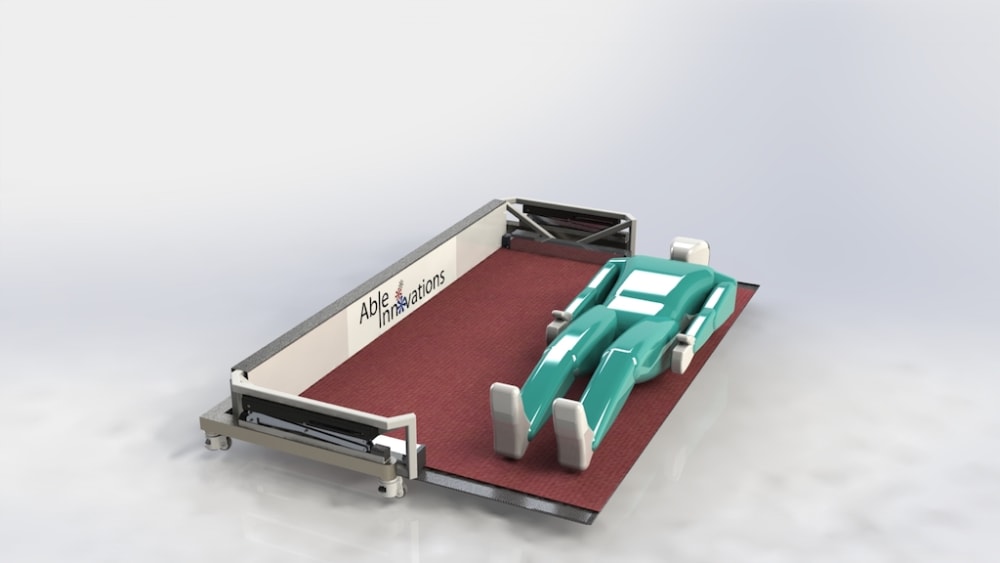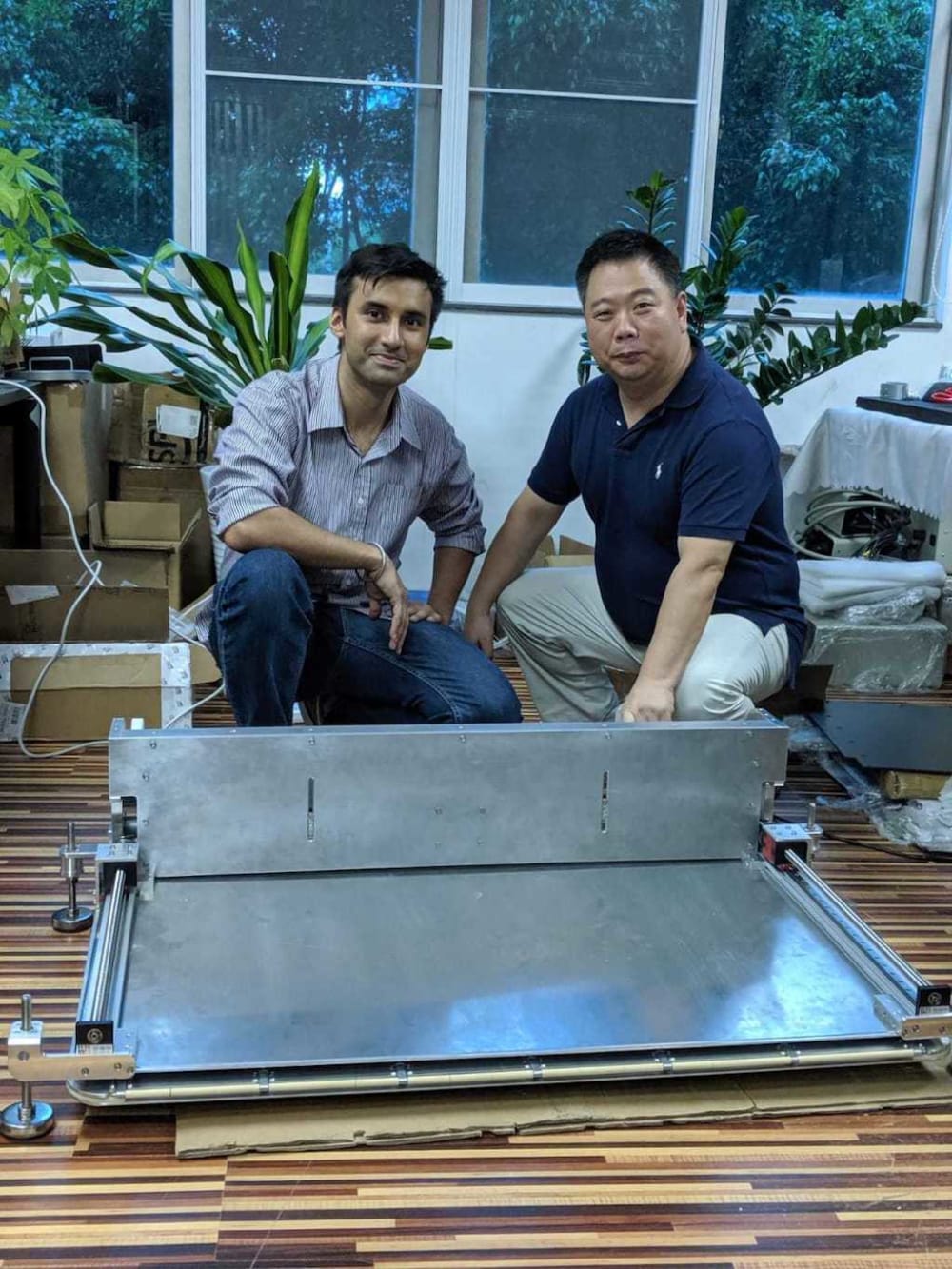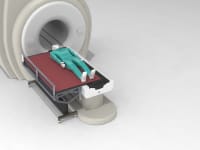
Able Innovations’ mission is to improve healthcare outcomes and people’s quality of life by developing innovative assistive technologies. Our first innovation is a transfer robot that can lift, move, and place humans in a fully automated manner with zero-physical effort from caregivers.
Our innovation moves objects similarly to a standard conveyor belt, but unique design considerations must be made to ensure the product is capable of performing fully-automated transfers of individuals in a safe, efficient, and dignified manner.
To do so, we are developing a unique biocompatible material for the conveyor belt surface, as well as an intricate sensory system to ensure a tolerable level of force is exerted on the individual being transferred, and that there is no shearing of delicate human skin. The robot will have computer vision and thermal cameras, allowing it to “understand” various environments and navigate autonomously, and differentiate between inanimate and animate objects. Utilizing computer vision and the sensory system, the robot will be able to determine the optimal angle of engagement for safe interaction with human bodies. In a healthcare facility, the robot would be called on to perform a transfer; the robot would then autonomously direct itself to the desired location, position itself beside the surface the patient is on, and initiate and complete a transfer in a safe manner.
By automating transfers and requiring zero-effort from caregivers, this technology is a remarkable improvement over the current state-of-the art: Hoyer lifts are the most popular transfer device and require significant labour and physical effort to operate, causing injuries and significant healthcare costs.
In terms of manufacturability, we are primarily utilizing known techniques and off-the-shelf components, and as a result, manufacturing costs would be relatively low. Our manufacturing partner in Shenzhen will ensure cost-effective production.
We aim to integrate the transfer technology in multiple products of varying complexity and capabilities to address problems of transfer in healthcare and homecare. The first two products will be capable of zero-effort lateral transfers, and zero-effort lifts of fallen individuals from ground level. Our ultimate goal is integrating this technology with a powered wheelchair to create a modular transfer-and-mobility device that is adaptable and can perform transfers between surfaces of varying shapes (i.e. bed to toilet, wheelchair to car seat).
There are practical applications and our target market is large and set to grow. Approximately 20% of all injuries to healthcare workers occur in transfer, and 2 workers are needed for a single transfer, creating over $1.2B in insurance claims and over $15B in labour costs each year in the US alone. Continued growth of the aging and bariatric population means more transfers, and these trends are further compounded by a shrinking worker base. Our lateral transfer device and floor-lift device can create significant savings for healthcare facilities by sharply reducing injury rates and labour costs and improving the efficiency of current resources. Our mobility-and-transfer device can afford immobile individuals an unprecedented level of independence and dignity in their lives, and facilitate aging-in-place for seniors.
-
Awards
-
 2019 Top 100 Entries
2019 Top 100 Entries
Like this entry?
-
About the Entrant
- Name:Jayiesh Singh
- Type of entry:teamTeam members:Jayiesh Singh - Chief Executive Officer
Philip Chang - Chief Technical Officer
Simon Chang - Product Engineer
Thomas Medal - Lead Mechatronics Engineer
Aditya Narayanan - Mechatronics Engineer
Veronica Guthrie - Biomedical Co-op Engineer
Mikhael Taye - Business Development Officer - Patent status:pending








